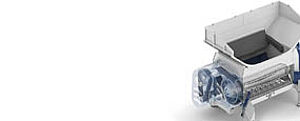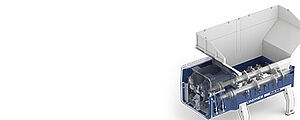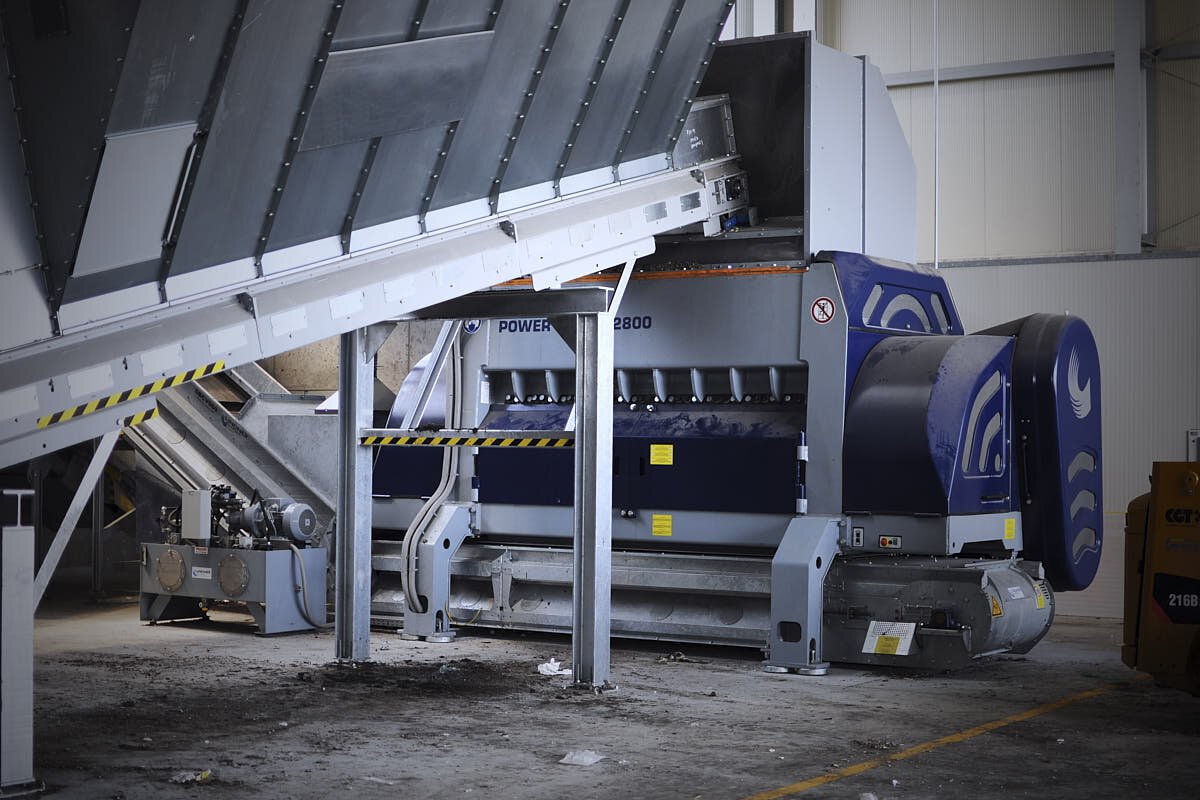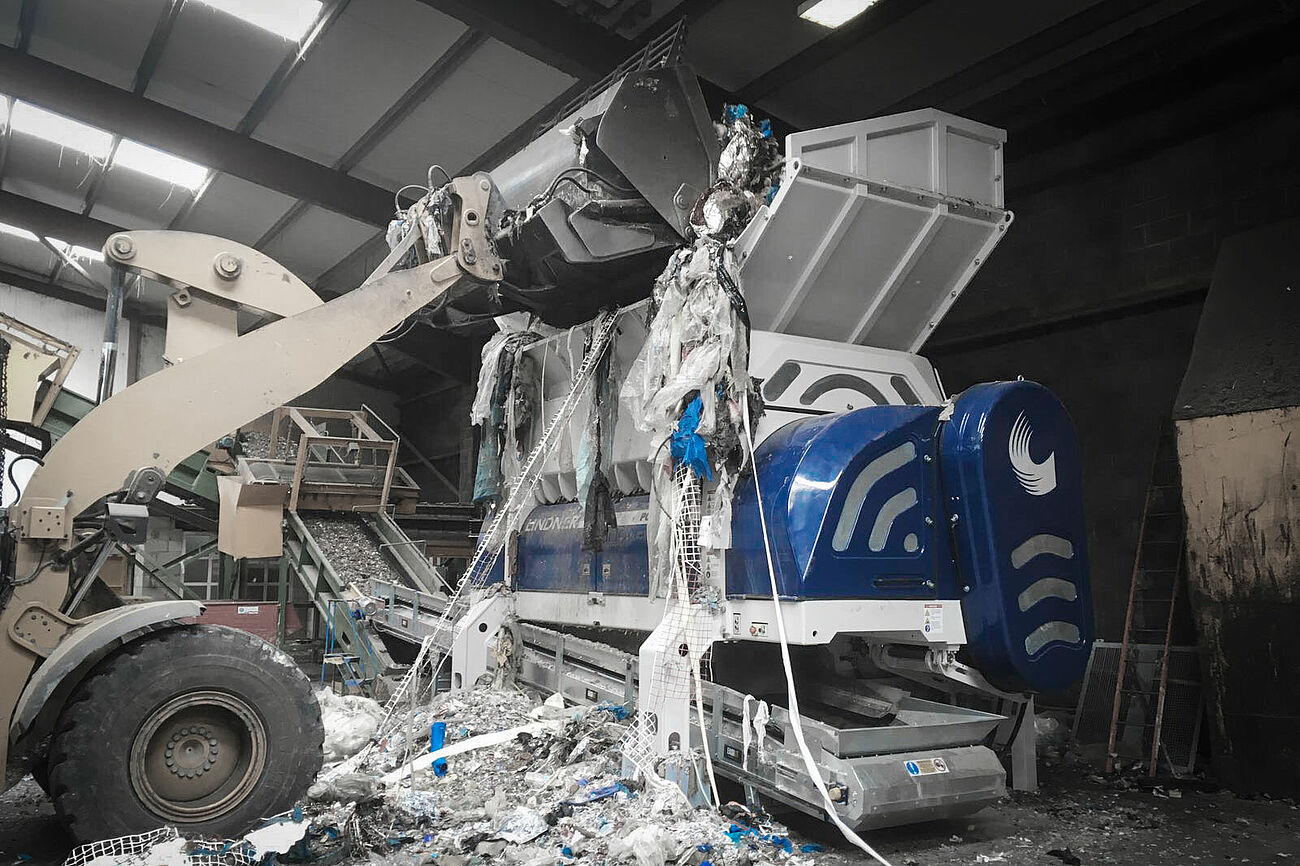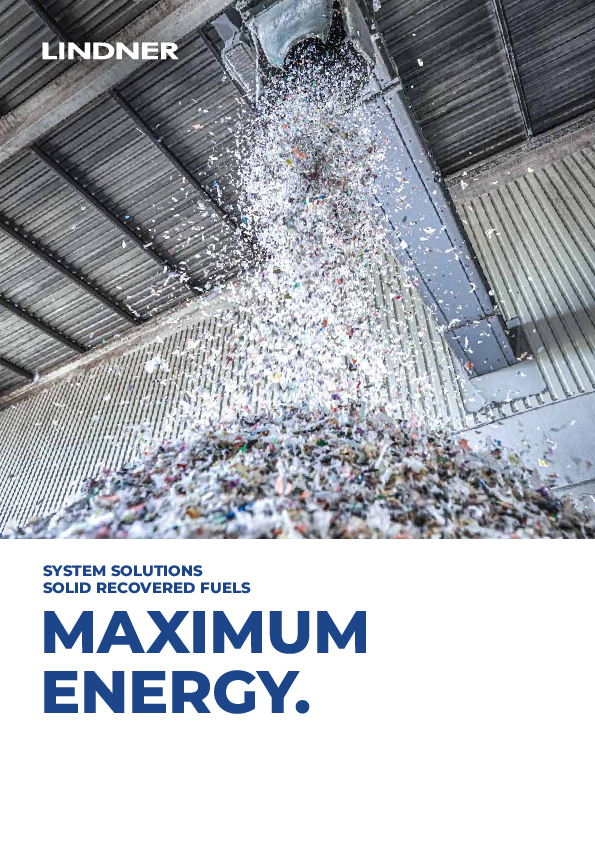MULTI-STEP PROCESSING OF PREMIUM SOLID RECOVERED FUELS
FOCUSED ON PERFORMANCE.
Lindner machines are ideal for the multi-stage processing of waste from municipal, commercial and industrial waste into a high-calorific premium SRF product. For Lindner users this means: solid recovered fuels free from foreign objects such as metals, stones or glass. Making supply or clinker quality issues a think of the past. Enjoy almost maintenance-free, reliable SRF processing with Lindner’s perfectly coordinated high-end primary and secondary shredders and twofold separation of foreign objects. High throughput and maximum output quality at your fingertips.
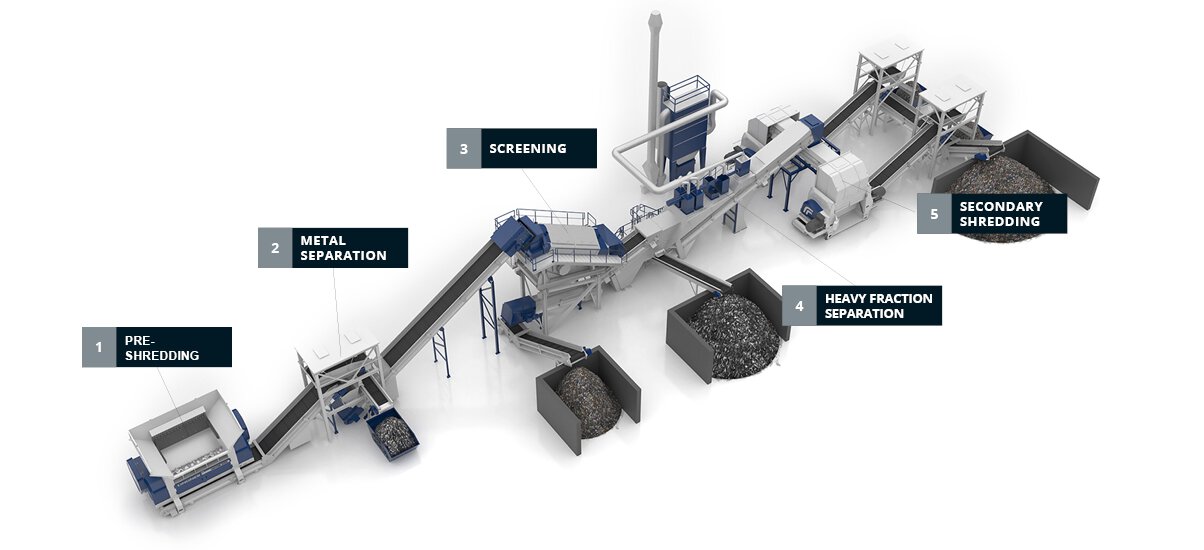
Shredder requirements
The primary shredder sets the pace for all subsequent processes and must continuously produce homogenous output from input material that is partially mixed with foreign objects. The resulting uniform and sortable material usually has a particle size of between 200 and 400 mm. Our JUPITER, the industry’s number-one permanently operational shredder is designed for continuous operation of up to 24 hours a day.
Related Product
SHREDDER REQUIREMENTS
Since the material is already ‘clean’, a secondary shredder or granulator – usually a high-speed rotor shredding system – is used to shred the material to an output size of 10–30 mm. Our high-speed KOMET series with its shear knives and always precise cut facilitates the highest output rates combined with a maximum uptime of up to 24 hours a day.
Related Product
SHREDDER REQUIREMENTS
The shredder must be particularly sturdy and resistant to foreign objects in order to shred the broad spectrum of partially bulky input materials. The aim is cost-friendly processing with the lowest possible €/ton ratio for the operator and continuously steady output between 50 and 100 mm – that is ready to be incinerated in cement kilns/calciners or as fuel for fluidised bed combustion.
Related Product
Shredder requirements
The shredder must be particularly sturdy and resistant to foreign objects in order to shred the broad spectrum of partially bulky input materials. The aim is cost-friendly processing with the lowest possible €/ton ratio for the operator and continuously steady output between 50 and 100 mm – that is ready to be incinerated in cement kilns/calciners or as fuel for fluidised bed combustion..
Related Product
Primary shredding

The process starts with untreated waste from households, commerce and industries being fed – often via wheel loaders, diggers or dosing conveyors – into the primary shredder. The aim is to obtain homogeneous, sortable material ready for the next step in the process.
MAGNETIC SEPARATION

In the second step, an overbelt magnet is used to securely extract ferromagnetic parts such as scrap iron and other ferrous scrap metal. Ferrous scrap metal in premium solid recovered fuels is said to spoil its quality. Once separated, it can be recycled.
Screening

The screening technology selected is matched to your exact requirements and includes drum screens, strainers, vibrating screens or disc screens. Depending on your needs, it is possible to extract different fractions in this process stage, such as fine particles of < 10 mm and oversized fractions to obtain high-quality, medium-particle premium SRF.
HEAVY FRACTION SEPARATION

Heavy fractions might cause increased wear or downtime in the secondary shredding process, which is why such fractions are sorted out. The material stream is fed continuously into a wind sifter where it is hit with an air current while it is in free fall. In this way, light materials are transported by air to the conveyor belt, whereas heavy materials fall to the ground to be discharged. Thanks to the circulating air, hardly any fresh air supply is needed.
Secondary shredding

In the final stage of the process, the material is shredded a second time in a process called fine shredding. The material that is now free from foreign objects, heavy fractions and ferrous metal is fed into one or more secondary shredders depending on the system’s throughput capacity. The output is then known as premium solid recovered fuel (SRF). Systems typically generate up to 40 metric tons of final premium SRF per hour.
SRF for main burners
Shredding of municipal, commercial and industrial waste for incineration with energy recovery in the main burner
IN GREAT DEMAND IN CEMENT WORKS.
Quality is king. Solid recovered fuels produced by Lindner machines are in great demand because they meet the high requirements for incineration in the main burner. The cement industry is ablaze with interest, the sheer quantity produced at the ThermoTeam facility in Retznei, Austria, alone proves that. Over the last 10 years, 1.2 million metric tons of carbon dioxide (CO2) have been saved in the adjacent cement facility, which would otherwise have been generated by using hard coal or lignite.
CEMENT KILN – MAIN BURNER FUEL CHARACTERISTICS
| Particle size | < 30mm, two-dimensional |
| Calorific value | > 22-25 MJ/kg |
| Density | < 150 kg/m3 |
| Moisture content | < 15% |
2D, HIGH IN CALORIFIC VALUE AND PRECISE – PREMIUM SOLID RECOVERED FUELS FOR MAIN BURNERS
Premium solid recovered fuels (SRF) are mainly used for co-incineration in the main burners of rotary kilns. As a substitute for primary fuels such as oil, coal or gas, the solid recovered fuel must be composed of precisely defined particles. This is the only way to achieve the high temperatures required to form the desired clinker minerals (approx. 1,450 °C) in the kiln‘s sintering zone.
